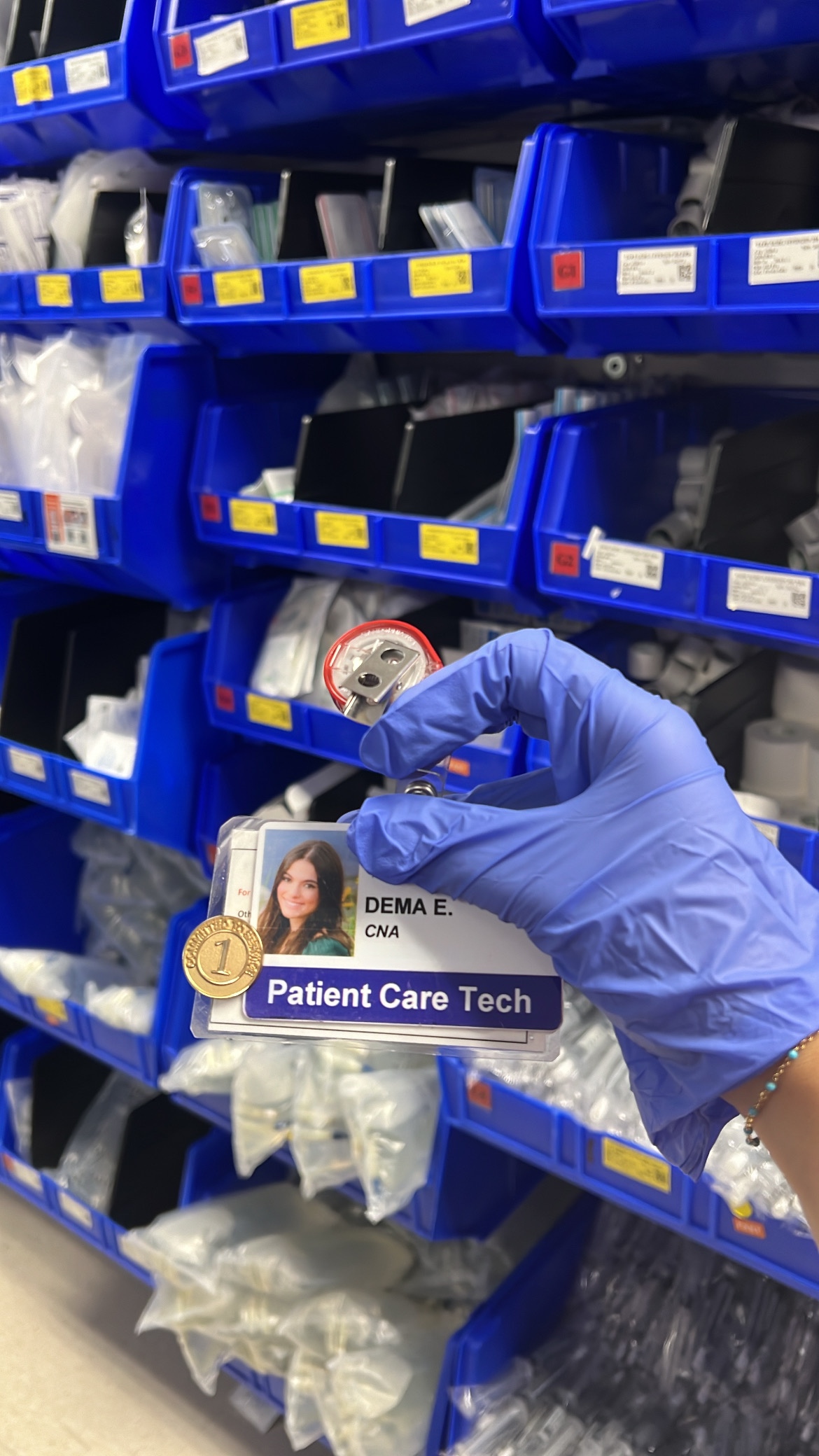Clinical Hours for Medical School:
If you ask me what is one of the most important aspects of your medical school application, I would say that, besides your GPA, it’s the time you spend with patient interactions during your college or gap years. Clinical experience allows you to see exactly what it would be like to be a healthcare worker. You can explore the reality of caring for patients and experience the emotional moments when someone is under your care.
Not only will clinical hours strengthen your medical school application, but they will also motivate and remind you of what you are working towards! I’m going to discuss the many ways you can get clinical experience and the opportunities available before applying to medical school. You can start gaining patient contact experience as early as high school.
1. Certified Nursing Aide
This one is my favorite and my main route to patient experience, though there are many other options. Being a CNA allows you to work directly with patients in hospitals, nursing homes, skilled nursing facilities, home health care, retirement homes, etc. The options are endless once you have your nursing assistant certificate. Although this route is more common for nursing majors, it is also great for pre-meds who want to take responsibility for patient care and work alongside nurses to maintain patients’ health.
As a CNA, you’ll gain practical skills, expand your medical knowledge, develop bedside manners, and be a vital member of a healthcare team. Facilities may have different requirements and responsibilities, but the patient remains the center of your role in every job.
Becoming a CNA is fairly easy; you can take a 4-12 week course with online training offered and complete your state exam to receive the license. Alongside being a CNA, you also earn your basic life support or other forms of CPR certification, allowing for more opportunities to practice patient care elsewhere.
2. Medical Assistant
Becoming a medical assistant is another way to achieve meaningful patient care hours and increase your knowledge of the healthcare field. MAs work closely with physicians in outpatient clinics and doctors’ offices, making this a top choice for pre-meds. The role of MAs can vary from being a front desk assistant for patients and playing the clerkship role in the office to helping with medical procedures and providing routine clinical vaccines.
Becoming an MA can be done in two ways: you can either complete an accredited program to obtain a medical assistant certification or get hired and be trained on the job based on prior experience. This depends on the job requirements for the clinic and the company’s need to hire an MA. Most of my friends in college have been able to work as MAs without completing a course or degree by simply asking the office if they are hiring. This job is rewarding and will allow you to gain valuable skills in patient care without needing any certifications or prior experience.
3. Medical Scribe
Becoming a scribe is one of the easiest ways to get patient experience if you are not fully sure about becoming a physician or working in healthcare. Scribing will help you get your foot into the healthcare environment and observe patient interactions with medical professionals.
Medical scribes are responsible for entering patient information into electronic health records ystems, ensuring that all details are accurately recorded. This includes documenting patient histories, symptoms, diagnoses, and treatment plans. By doing so, scribes allow physicians to focus more on patient care rather than administrative tasks.
Working as a medical scribe offers valuable insights into the healthcare field. You get to see firsthand how doctors interact with patients, make clinical decisions, and manage their practices. This experience can be incredibly motivating and enlightening, helping you determine if a career in medicine is right for you.
Overall, being a medical scribe provides a comprehensive view of the clinical environment, enhances your understanding of medical practices, and builds a solid foundation for your journey towards becoming a physician.
To become a medical scribe, start by researching the role and meeting basic requirements, such as a high school diploma. Develop relevant skills like medical terminology and consider completing a training program. Apply for positions at hospitals and clinics and undergo on-the-job training to familiarize yourself with specific procedures. Optional certification can enhance your credentials and career prospects but not needed.
4. Emergency Medical Technician (EMT)
Becoming an EMT is something I learned about early in my pre-med journey, and I had many classmates pursuing this path. This job is ideal if you are an adrenaline junkie who likes to work quickly and in high-stress situations.
An EMT responds to emergency situations and is employed by ambulance services, hospitals, fire departments, and police agencies. Their job is to assess the scene, evaluate the patient, determine a plan of care, and provide first-aid treatment.
This job will equip you with valuable skills needed in medical school. However, it is a longer program that may take up to a year to complete all required training hours.
5. Phlebotomist
I admire anyone who works as a phlebotomist because it’s a job I tend to avoid—not because it’s bad, but because drawing blood is currently my biggest hurdle! If you’ve ever had your blood drawn or had labs done, then you’ve met a phlebotomist.
Blood tests offer crucial insights into the body’s internal conditions and often serve as the initial step in diagnosing and treating patients.
A phlebotomist’s duties include confirming the identity of patients, explaining the blood draw procedure, and collecting and labeling blood samples. These samples are then sent for analysis.
Phlebotomy training programs, available at community colleges, technical schools, and hospitals, typically take 8-16 weeks to complete. To earn certification, you’ll need to complete a required number of successful blood draws and training hours.
If you’re detail-oriented, possess a steady hand, and have a calm and comforting demeanor, this premed job could be a great fit for you—provided you can handle the sight of blood!
—
For more information on EMT courses and certifications, click here. I have a separate page about my journey to becoming a patient care technician here.

